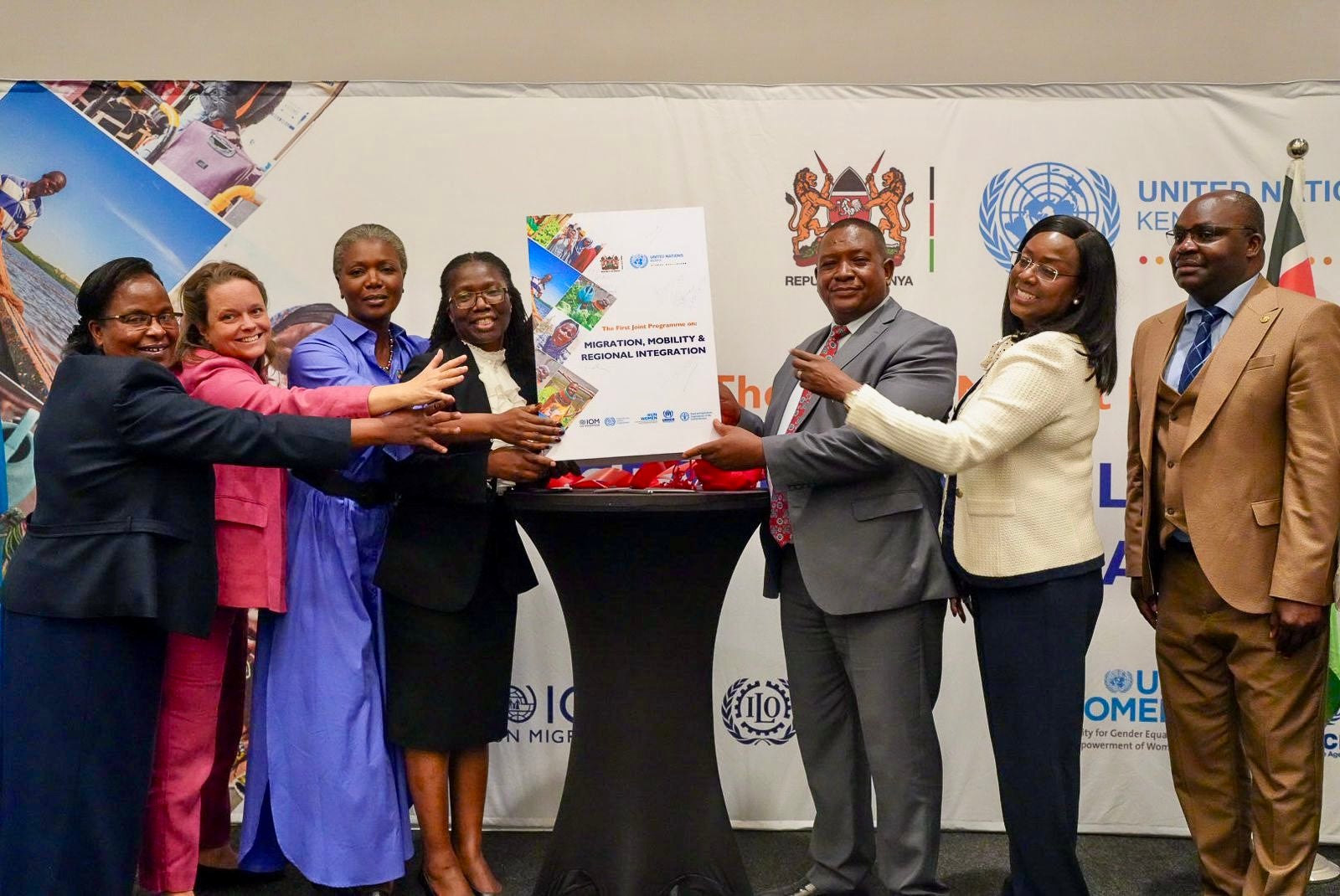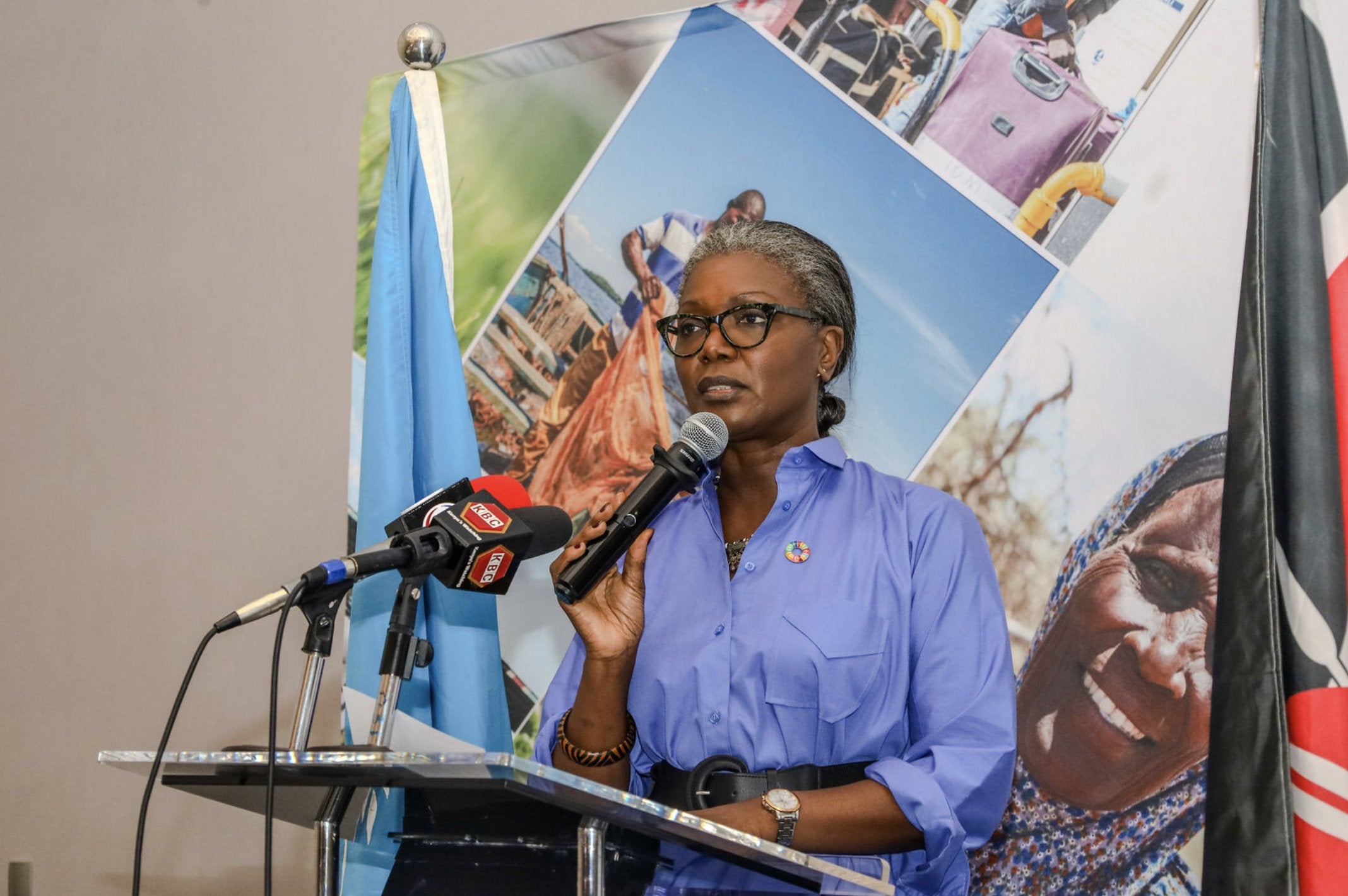Kenya Launches Landmark UN-Government Initiative on Migration and Regional Integration
Date:

The United Nations in Kenya, in collaboration with the Government of Kenya and various partners, launched the USD 28.5 million Joint Programme on Migration, Mobility, and Regional Integration. The Joint Programme is a strategic collaboration between the United Nations and the Government of Kenya. Running from December 2024 to June 2026, the programme aims to support Kenya’s Vision 2030 and the Sustainable Development Goals, focusing on capacity building, policy advocacy and community participation to enhance social cohesion and regional integration.
Highlighting the transformative potential of the programme, the UN Resident Coordinator, Dr. Stephen Jackson, remarked, “Migration and mobility are not just challenges to address but opportunities to embrace. This Joint Programme highlights our commitment to harnessing the potential of migration to drive economic growth, promote social justice, and build a more inclusive and peaceful future for all.”
During the launch, UN Women Kenya Country Representative, Antonia Ngabala emphasized that UN Women will advance gender-responsive migration policies to protect the rights of women, girls, and vulnerable groups. “This Joint Programme focuses on strengthening governance, empowering communities, and ensuring inclusion in decision-making. Collaboration is key. With support from stakeholders, we aim to transform migration governance, deliver gender-responsive services, and create inclusive opportunities for migrants and host communities in Kenya” she said.

The Programme is co-chaired by the State Department for Immigration and Citizen Services and the International Organization for Migration (IOM) with active participation from several UN agencies, including UN Women, FAO, ILO and UNHCR. This comprehensive initiative seeks to improve governance, strengthen service delivery, and empower communities affected by migration.
The Programme adopts a whole-of-government and whole-of-society approach, engaging state and non-state actors, including civil society organisations, the private sector, and local communities. Through a focus on capacity building, policy advocacy, and community participation, the programme is designed to address the multifaceted nature of migration in Kenya while promoting regional integration and social cohesion.
The Chief of Mission for IOM Kenya, Sharon Dimanche, also underlined the critical role of partnerships in advancing this agenda: “Today’s event is not just a launch; it is a testament to our collective efforts and commitment to address migration in a way that supports Kenya’s Vision 2030 and aligns with the 2030 Agenda for Sustainable Development”.
“Migration is an engine of economic growth and innovation, and it can greatly contribute to more efficient, inclusive, resilient and sustainable agrifood systems”. Said the FAO Country Representative in Kenya, a.i - Tipo Nyabenyi Tito.
The new Joint Programme on Migration is an exciting step forward for UN agencies and the Kenyan Government. Through coordination, we can ensure no one is left behind – remarked Caroline Van Buren, UNHCR's Country Representative in Kenya.
Kenya, home to over one million migrants and more than half a million registered refugees, is a key player in regional migration dynamics. As a country of origin, transit, and destination, migration significantly influences Kenya’s 5-year Medium-Term Plan (MTP) 2023-2027. This Joint Programme will provide a timely and strategic complement to the Government of Kenya’s efforts to integrate migration across sectors and unlock its developmental potential.